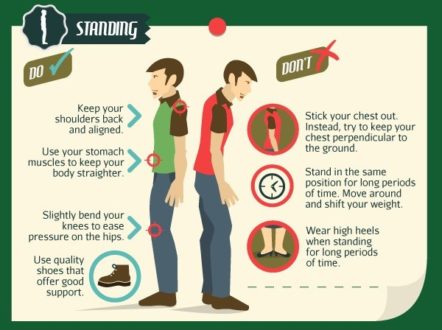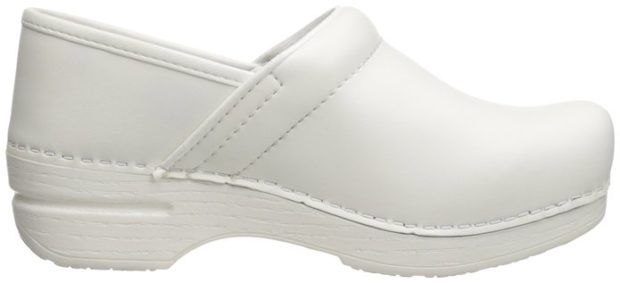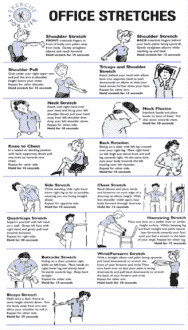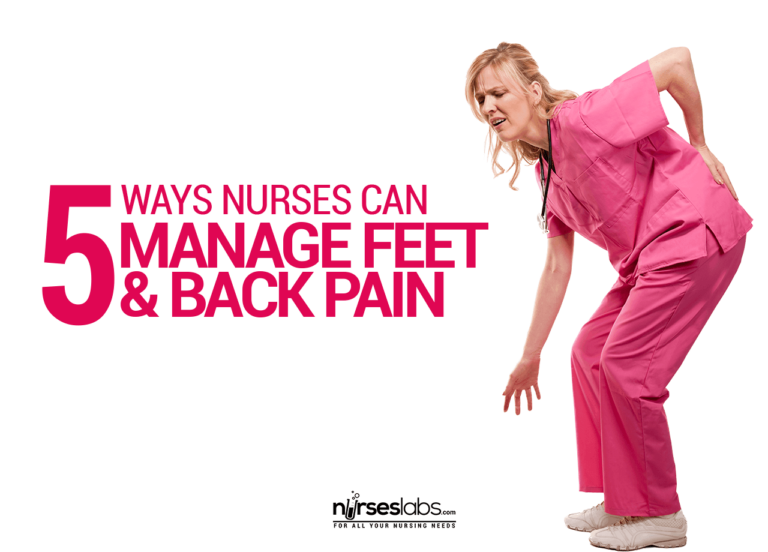With long and toxic working hours, it’s not surprising to find that almost all nurses have the same things to say at the end of their shifts. If they aren’t verbal complaints, you’ll probably see them stretching and massaging their achy bodies. To address feet and low back pain, here are five things you can do:
1. It’s all about posture.
Lifting and transferring patients are some of the most frequent reasons why nurses are particularly vulnerable to work-related musculoskeletal disorders. Aside from these things, the way we sit, reach over and stand for long period of hours also put so much stress on our muscles.

While these activities are inevitable in our line of work, being mindful of your posture can help a lot. To start, you can take a look at your reflection in the mirror. When standing up, your spine should be in line with your hips and your stomach should be tucked in. When seated, make it a point to keep your back straight and evenly distribute your weight on both hips. To prevent strain, make sure to avoid abrupt changes in your position and use the concepts of body mechanics.
2. Invest in a good pair of shoes.
Nurses’ shoes tend to be lighter than other types of shoes. Most of them are made with special materials to protect your feet, particularly from spills. There are even some types of nurses’ shoes that have a unique set of soles to help with your balance, so you don’t slip when the action starts to get intense in your shift.

While there isn’t anything technically wrong with wearing other shoe types at work, the level of comfort and protection you can get from nurses’ shoes can speak a lot. The right size, arch support and quality of the materials used can help increase your productivity at work.
“I used to wear my old pair of tennis shoes at work. They seem pretty comfortable at first but two to three hours into the shift, I can hear my feet yelling at me. I decided to replace them after a few weeks because of a really persistent backache. It’s one of the wisest decisions I’ve ever made”, a ward nurse said.
3. Do stretching.
Staying in one position for an extended period puts an unequal amount of pressure on your muscles. This results in weakening and uneven distribution of weight. The longer you stay in that position, the more damage you’re causing.

Stretching while on duty is helpful because it helps loosen up your tight muscles. It doesn’t necessarily have to be intense. In fact, even a short hamstring stretch on the stairs can do your muscles really good.
4. Get moving and exercise.
While stretching can help temporarily relieve back and leg pain, engaging in some form of exercise can keep these body aches away longer. Strength training exercises, such as body squats, can build better stability and strength in your entire body. Pilates is also good to try as it specifically targets to increase both strength and flexibility.
“I squeeze in yoga at home at least twice or thrice a week. It helps me with me a backache. I usually do it after an exhausting shift or when I’ve had a stressful day.” an ER nurse shared.
5. Loosen up.
When you’re stressed, there’s a good chance for you to feel pain more. This is because stress triggers the release of hormones that intensifies your pain receptors. Aside from low back pain, it can also affect your jaw and stomach.
After a toxic shift, it can help if you can take the time to de-stress. There are a lot of relaxation activities that you can do without spending too much time or even money. It can be as simple as taking a short walk in the park or trying out a new recipe in your kitchen.How do you handle pain? What exercises do you do to lessen
Nursing is a job that needs a lot of bending our backs, flexing our arms and legs and pushing and pulling patients. Because of this, many nurses are at risk for developing physical strain and back injuries or even fractures. One way to prevent these from happening is to practice proper body mechanics.
Proper Body Mechanics for Nurses
Body mechanics is a broad term used to denote an effort coordinated by the muscles, bones and nervous system. It can either be good or bad and can be directly related to the occurrence of back pains.
Rules
These are different rules that apply when you transfer or move your patients to protect your back:
- Keep the lower portion of your back in its normal position at all times.
- Move as close to the patient’s bed as you can.
- Don’t twist your body. Always do a side step or a pivot.
- Set your feet into a comfortable and solid wide base of support when lifting.
- Keep your abdominal muscles contracted, bow slightly using the hips and squat.
- Keep the head upright and hold your shoulders up.
- Pushing up from the knees and using your own momentum would help you lift the patient.
Importance
What exactly are body mechanics and why are they important? The reason for using proper body mechanics is mainly to avoid:
- Musculoskeletal strain
- Injuries to members of the staff
- Injury to the client
- Fatigue
Techniques
Here are the different principles to be a nurse with proper body mechanics:
Stable Center of Gravity
Maintain a stable center of gravity to evenly distribute your body weight
- Keep your center of gravity low.
- Greater balance is met with a low center of gravity.
- Flex your knees and keep your body straight rather than bending.
Wide Base of Support
Maintain a wide base of support
- Having a wide base of support gives your body more stability.
- Spread your feet apart to a reasonable distance.
- Flex your knees to move the center of gravity closer to the base of support.
Proper Body Alignment
Maintain Proper body alignment
- Body alignment refers to the way the joints, tendons, ligaments and muscles are arranged when initiating a position.
- A line of gravity passing through your base of support maintains your balance.
- Equal activity balance in upper and lower parts of the body would reduce your risks of having back injury.
- When you’re stronger muscle group are involved, greater amount of work can be safely done.
- Keep the back upright when performing interventions.
Moving Clients
Here are some guidelines into how to properly move clients and other objects on the work area using proper body mechanics:
Pushing
- Stay close to the subject being pushed.
- Place one foot in front of the other
- Place the hands on the subject, flex your elbows and lean to the subject.
- Place the weight from your flexor to the extensor portions of your leg.
- Apply pressure with the use of your leg muscles.
- To prevent fatigue, provide alternate rest periods.
Pulling
- Stay close to the subject being pulled.
- Place one foot in front of the other
- Hold the subject, flex your elbows and lean your body away from the subject.
- Shift your weight away from the subject.
- Avoid any unnecessary movements.
- To prevent fatigue, provide alternate rest periods.
Lifting and Carrying
- Be on a squat position facing the subject.
- Hold the subject and tighten your center of gravity.
- Use your dominant leg muscles when lifting.
- Hold the subject at waist height and close to the center of gravity.
- Keep your back erect.
